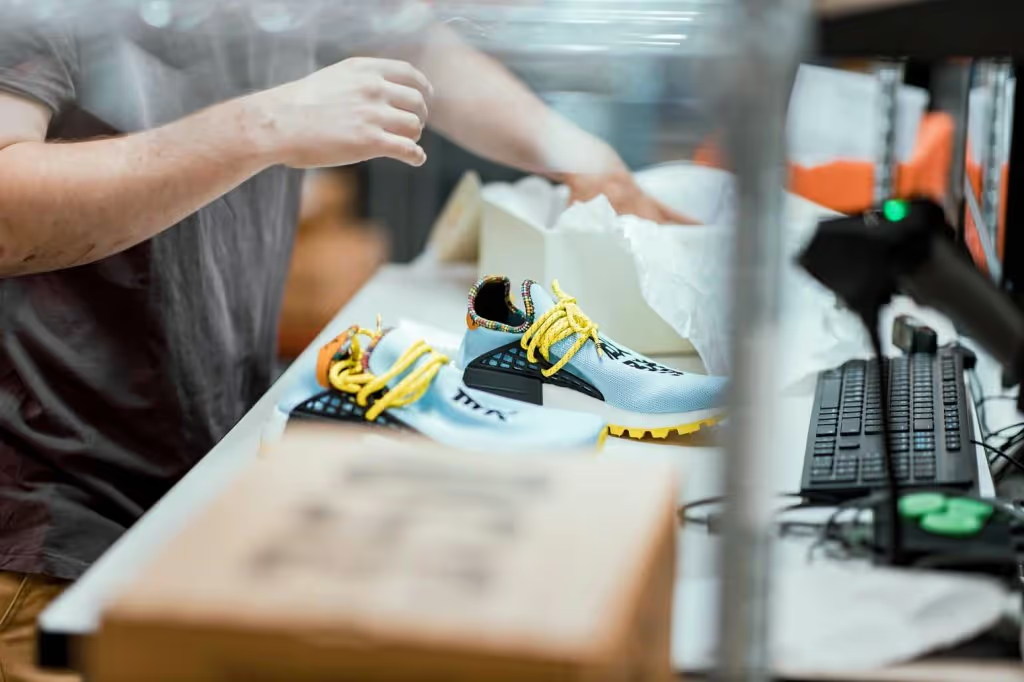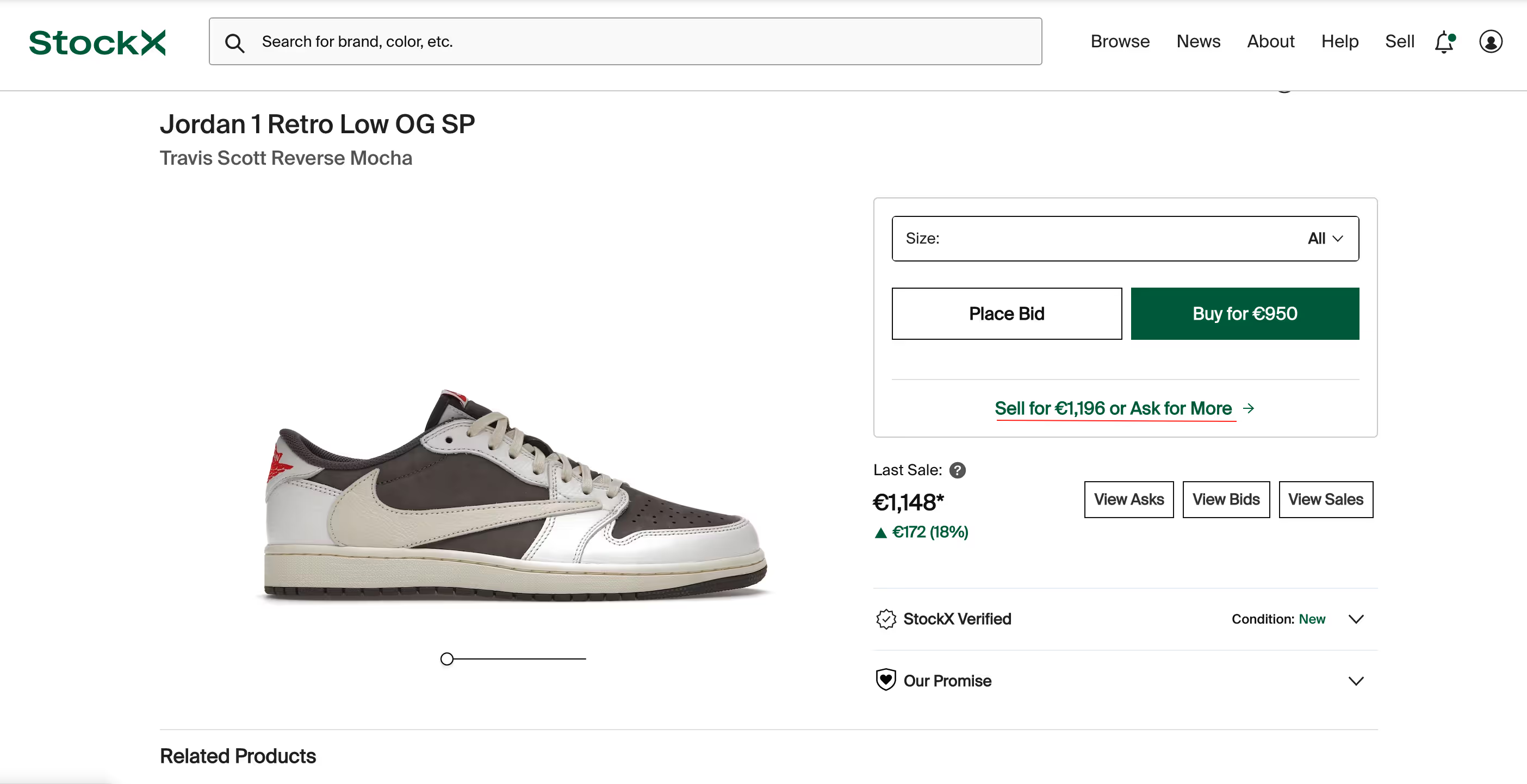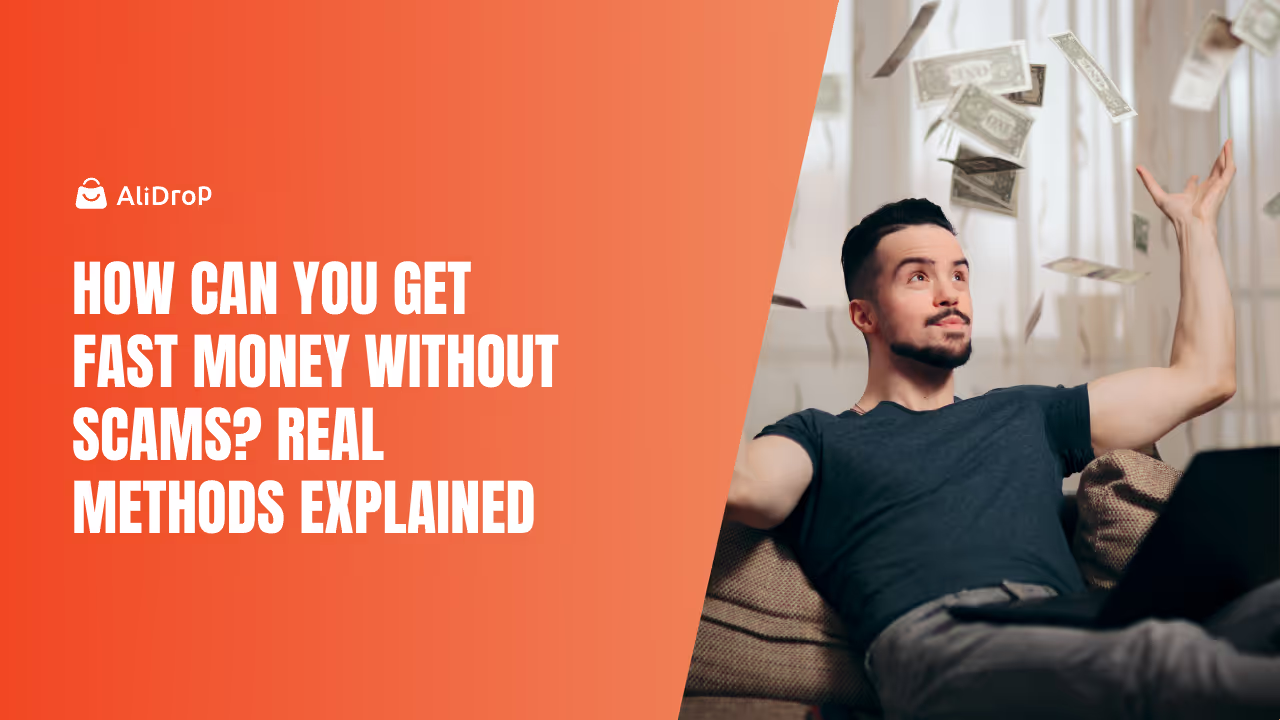StockX has become a trusted place to buy and sell everything from rare sneakers to gaming consoles. Its selling process is built for speed, accuracy, and security, giving you the chance to connect with buyers all over the world without the usual headaches of online selling.
If you want to learn how to sell on StockX, you can start with nothing more than an account and an item in new condition. You don’t have to take product photos, write lengthy descriptions, or answer questions from potential buyers. Instead, you search StockX’s catalog, select your exact item, set your price, and wait for a buyer.

In this guide, you will see each step of selling on StockX, from creating your account to collecting your payout, plus advanced tips to help you get the most from each sale.
What is StockX?
StockX calls itself “the stock market of things” because prices rise and fall based on real-time demand. Instead of guessing what something might be worth, you can see recent sale prices and active bids before deciding to sell. This transparency helps you make smarter pricing decisions and time your sales to match market activity.
The platform covers much more than sneakers and footwear. You can list streetwear from major brands, trading cards, game consoles, computer components, designer handbags, watches, and even NFTs. Every item on the site must be in brand-new condition, which keeps the buying and selling process clear and consistent.
Why StockX?
Sellers often choose StockX for its scale. With buyers in over 200 countries, there will almost always be someone looking for the exact product you have. Because the platform handles authentication, you avoid the risks of meeting buyers in person or shipping items without verification.
Instead of creating product pages from scratch, you simply search for your item in StockX’s catalog, select it, and set your price. This system removes the need for photography or lengthy descriptions, so you can focus on tracking trends and setting prices that move your inventory quickly.
How to Sell on StockX: Step-by-Step Guide
Here is how you can get started selling on StockX:
How to Create Your StockX Seller Account

You can create your StockX seller account in minutes. Start by visiting StockX.com and selecting the sign-up option. You can register using your email address, or you can connect through Google, Apple, Facebook, or Twitter for faster access.
Once your account exists, you will need to set up your payout method before you can list an item. StockX supports options like PayPal, Venmo, and direct bank transfer. Choose the method you prefer, and double-check that the linked account is active and ready to receive funds.
After your payout method is in place, you can access your seller dashboard. This is where you will find tools to create new listings, view current offers, track pending sales, and review your transaction history. You will also see your seller profile, which includes your seller level, transaction count, and average shipping time.
There is no approval process before you start selling. As soon as your account and payout method are set, you can list an item immediately. This is one reason new sellers often choose StockX over other marketplaces that require lengthy application steps or product verification before listing.
How StockX’s Selling Process Works
When you learn how to sell on StockX, you will see that every transaction follows the same four steps: list, ship, authenticate, and get paid. This structure keeps the process simple and predictable, whether you are selling one item or managing regular sales.
You start by creating a listing. Instead of uploading photos and writing descriptions, you search for your product in StockX’s database, select the exact match, and set your price. You can either place an Ask, which is your preferred selling price, or choose Sell Now to accept the highest current bid instantly.
Once a buyer matches your Ask or you accept a bid, StockX sends you a prepaid shipping label. You then have two business days to package your item according to their rules and ship it to their authentication center.
At the authentication stage, StockX’s team verifies the item’s condition and confirms it is genuine. If your item passes, they send it to the buyer and release your payout. Most sellers receive funds daily once items clear verification, and higher-level sellers can qualify for early payouts once their shipment is scanned.
How to List Your Item on StockX

You can list an item on StockX without taking photos or writing descriptions. Start by typing your product name into the search bar. StockX’s catalog will display matching items with brand, model, and style details. Select the exact match to move forward.
Once you choose your product, you will select its size and condition. StockX accepts only brand-new items in original packaging. Pricing often changes based on size, especially with sneakers, so check the current Ask and Bid prices for your size before setting yours.
You can set an Ask, which is the price you want, or you can choose Sell Now to accept the highest current bid instantly. If you want to sell faster, position your Ask close to the lowest one already on the market. If you want to aim for a higher profit, you can set your price above current bids and wait for a buyer willing to pay it.
After setting your price, confirm your payout method. When your listing is live, buyers can either match your Ask or place a new bid. StockX notifies you the moment a sale occurs, so you can prepare your item for shipping.
Pricing Strategies That Maximize Profit
When you set your price on StockX, you’re working within an active market where numbers shift daily. The goal is to position your listing so it either sells quickly or earns a higher return, depending on your priorities.
Say you’re selling a pair of Air Jordan 4 “Thunder” in size 10. StockX shows the lowest Ask at $285 and the highest Bid at $270. If you want to move the pair today, you can either select Sell Now and take the $270, or list at $284 to undercut the lowest Ask while still earning more than the highest Bid.
For sellers aiming for a higher margin, timing can matter more than speed. Imagine a PlayStation 5 console with the highest Bid at $520 and a recent sale at $575. If holiday shopping season is two weeks away, you can set an Ask at $580 and wait for demand to push buyers to match it.
Size differences also affect sneaker pricing. A Yeezy Boost 350 in size 7 might have a highest Bid of $220, while size 12 sits at $260. Listing the right size at the right time can mean a 15–20% difference in payout.
By checking real-time Bids, Asks, and recent sales, you can decide whether to prioritize speed or maximum return with every listing.
Packaging and Shipping Rules
Once your item sells, StockX gives you two business days to send it to their authentication center. You will receive a prepaid shipping label and a packing slip through your account dashboard. Download and print both before preparing your package.
Start by placing your item in its original packaging. For sneakers, that means the original shoebox with all inserts and tags intact. For electronics or collectibles, keep every factory seal and accessory. Place the packing slip inside this original packaging.
Next, put the original box inside a sturdy outer shipping box. Choose one that allows a small amount of space around the item so you can add protective materials like bubble wrap or packing paper. This keeps the product secure during transit. Remove or cover any old barcodes or labels from the outer box before attaching your new shipping label.
Once packed, drop off your shipment with the carrier listed on the label, usually UPS. Keep your receipt and tracking number. This proof of shipment can help if a package is delayed or misplaced in transit.
The StockX Authentication Process
After your package arrives at a StockX authentication center, the verification team inspects it to confirm that it is genuine and in new condition. They compare your item to manufacturer specifications, check materials and stitching, and look for any signs of wear or damage.
For sneakers, they examine the shape, logo placement, insole print, and even the smell, since counterfeit pairs often have noticeable differences. For electronics, they check serial numbers, seals, and functionality when required. Collectibles and streetwear go through similar checks to confirm authenticity.
If your item passes, it receives a “StockX Verified” tag and is sent to the buyer. StockX then releases your payout according to your payment schedule. For most sellers, funds arrive daily once items clear verification. Higher-level sellers can qualify for early payout once their shipment is scanned by the carrier.
If an item fails authentication, StockX contacts you with details. Common reasons include missing accessories, damaged packaging, manufacturing defects, or signs of wear. You can choose to have the item returned or, in some cases, appeal the decision with additional proof.
How StockX Seller Levels Work
StockX uses a tier system for sellers. Your level depends on the number of sales you complete or the total value of those sales in a single calendar quarter. Higher levels come with lower fees and extra features:
- Level 1 is where every seller starts. The fee is 9% plus a 3% payment processing charge. You can sell without limits, but you won’t have access to advanced tools yet.
- Level 2 requires about a dozen sales or around $1,500 in sales value during the quarter. The fee drops slightly, which means more money stays in your payout.
- At Level 3, you need roughly 40 sales or $5,000 in value. This tier unlocks bulk shipping in supported regions.
- Level 4 requires about 200 sales or $25,000 in value. This tier offers early payouts, retail drop-off options in some locations, and priority customer support.
- Level 5 is the highest status, requiring around 800 sales or $100,000 in value. At this level, sellers receive the lowest fees, a dedicated account manager, and access to exclusive selling opportunities.
Advanced Tools for Serious Sellers
Once you reach higher seller levels, StockX gives you access to features that can save time and expand your reach. One option is StockX Pro, available to Level 4 and Level 5 sellers. With Pro, you can create bulk listings, group similar items, and use advanced pricing tools to track market changes across your entire inventory. Hotkeys allow you to make quick updates without clicking through multiple screens, which is useful when you need to adjust prices on several listings at once.
If you already sell through your own online store, you can connect a Shopify account to StockX. This connection lets you list items and manage orders from one place, reducing the need to switch between platforms.
Another option is Sponsored Asks, which places your listing in prime locations on StockX, including product pages, search results, and even the homepage. This can lead to faster sales when competition for attention is high.
Getting Paid: Payouts, Fees, and Taxes
When your item passes authentication, StockX releases your payout through the method you selected during account setup. Most sellers receive payments daily, though the actual time for funds to appear depends on your bank or payment service.
The standard transaction fee for new sellers is 9% of the sale price. On top of this, there is a 3% payment processing charge. As your seller level increases, the transaction fee decreases, which means more profit from each sale.
For example, if you sell a pair of sneakers for $300 at Level 1, you will pay $27 in transaction fees plus $9 in processing fees, leaving you with $264 before any shipping supplies or other costs. At Level 4, the same sale might cost you $22.50 in transaction fees, increasing your net payout.
StockX reports earnings to tax authorities when you pass certain thresholds. In the United States, you will receive a Form 1099-K if you meet the IRS reporting requirements. Keep accurate records of your sales, costs, and any other relevant expenses so you can report your income correctly.
Pro Selling Tips to Beat the Competition
You can improve your results on StockX by using the same habits that top sellers follow:
- Watch the market daily. Prices can shift based on restocks, special events, or changes in demand. If you see a sudden jump in the highest Bid for an item you own, it might be the right moment to sell.
- List beyond sneakers. Electronics, collectibles, and streetwear can sometimes offer higher margins, especially during seasonal demand spikes. For example, gaming consoles often see higher bids during the holiday season, while certain trading cards can spike in value after tournament wins or set retirements.
- Pay attention to size-based pricing. A men’s size 9 in a popular sneaker might sell for $250, while size 12 in the same model could reach $280. Knowing these differences can help you target the most profitable inventory.
- Use Sell Now when you want quick cash flow, especially if the highest Bid is close to your target price. Use Ask when you can wait for the market to meet your number.
Avoid These StockX Selling Mistakes That Kill Profit
Some errors on StockX can reduce your earnings or cause unnecessary delays. Knowing them ahead of time can save you both time and money:
- One common mistake is listing without checking the current market data. If you set an Ask far above the going rate, your listing might sit for weeks without interest. On the other hand, pricing far below the lowest Ask can mean missing out on extra profit.
- Shipping late is another costly error. StockX gives you two business days to send your item after a sale. If you miss this window, you risk account penalties or even sale cancellation.
- Condition issues are a frequent cause of failed authentication. StockX only accepts new items in original packaging. A missing tag, a damaged box, or even minor wear can lead to rejection, return shipping costs, and wasted time.
- Some sellers forget to factor in fees before listing. Selling a $200 item with $27 in total fees leaves you with $173, not $200. This miscalculation can make a sale far less profitable than expected.
Conclusion
Selling on StockX gives you a clear path from listing to payout. The platform handles buyer interaction, payment processing, and authentication, leaving you to focus on pricing and shipping. You can sell across multiple categories, including sneakers, streetwear, electronics, collectibles, and NFTs, while reaching buyers worldwide.
As you complete more sales, try to climb the seller levels. Keep an eye on market data, ship promptly, and maintain perfect product quality to build a strong seller reputation.
How to Sell on StockX FAQs
Can you sell limited edition items on StockX?
Yes, you can sell limited edition releases on StockX as long as they are brand new and match StockX’s catalog listing. Buyers often pay a premium for rare drops, so check market trends before you set your price. Limited releases can sell quickly if you list them during peak demand, such as right after launch.
Does StockX charge sellers for unsold listings?
No, StockX does not charge you for keeping an item listed without a sale. You can leave your Ask active until a buyer matches it or adjust it at any time. This allows you to hold your price until the market moves in your favor without paying extra to keep your listing live.
Can you cancel a sale after accepting a bid?
Once you accept a bid or a buyer matches your Ask, the sale becomes binding. StockX expects you to ship the item within the deadline. If you cancel after a sale is confirmed, you risk penalties to your account. These penalties can include fines, loss of seller level status, or temporary suspension from selling.
How do you sell streetwear on StockX?
Selling streetwear works much like selling sneakers. Search for the exact item, choose the correct size, and confirm it’s new with all original tags and packaging. Streetwear buyers value authenticity and condition, so keeping your item untouched increases your chances of passing authentication. Popular brands like Supreme, Palace, and Fear of God often attract strong bids.
Does StockX allow international sellers?
Yes, StockX supports sellers from many countries. You will need to check the list of supported seller locations in StockX’s help center. If you qualify, you can list items the same way as local sellers. International sellers still ship to a regional StockX authentication center before the item goes to the buyer.
Can you track your item after shipping it to StockX?
Yes, you can track your item using the tracking number from the prepaid label. Once you drop it off with the carrier, enter your StockX account to see real-time updates. The system marks when the package arrives at the authentication center, giving you a clear timeline for when you can expect your payout.
























